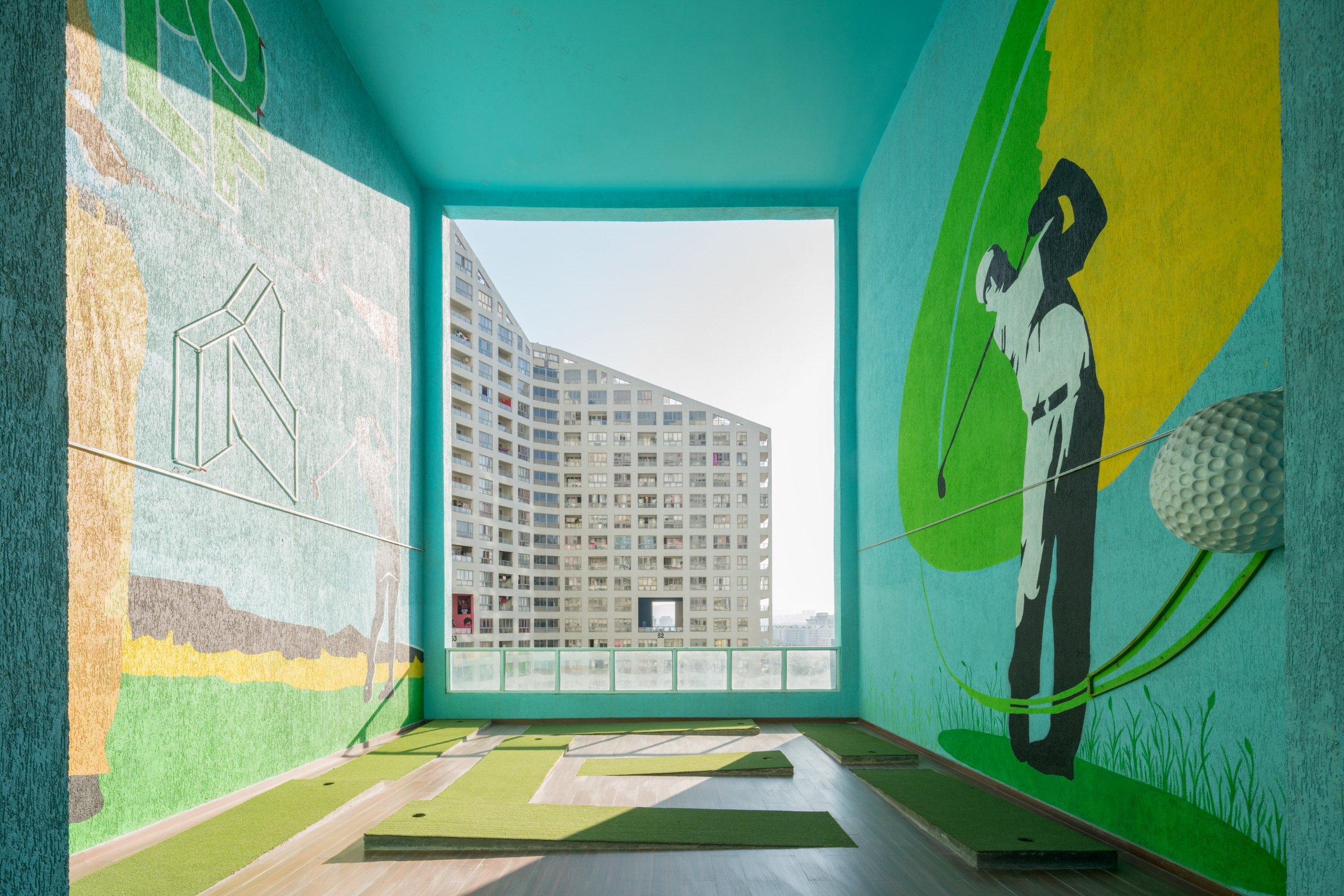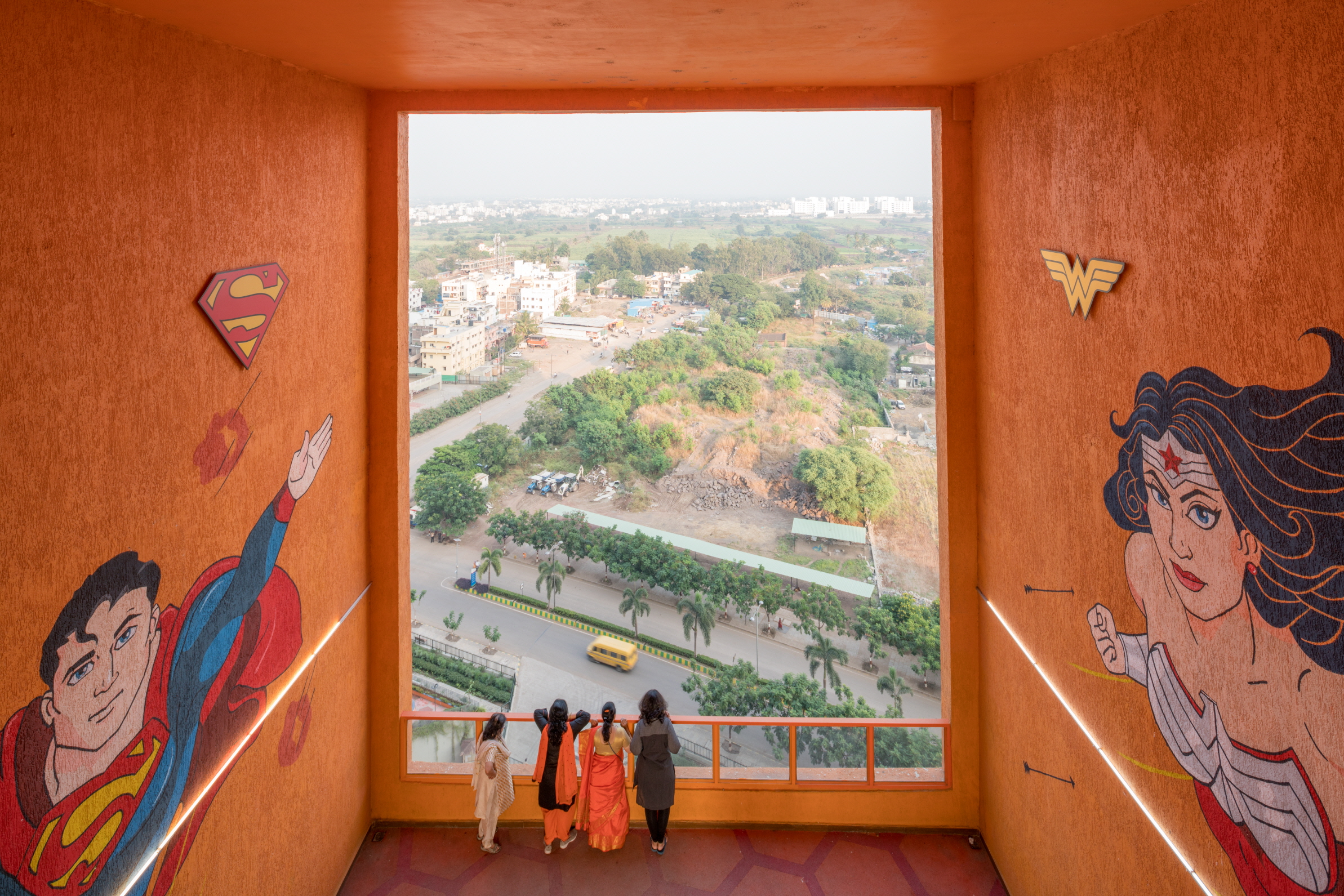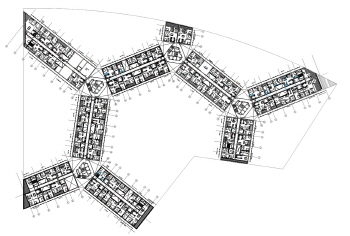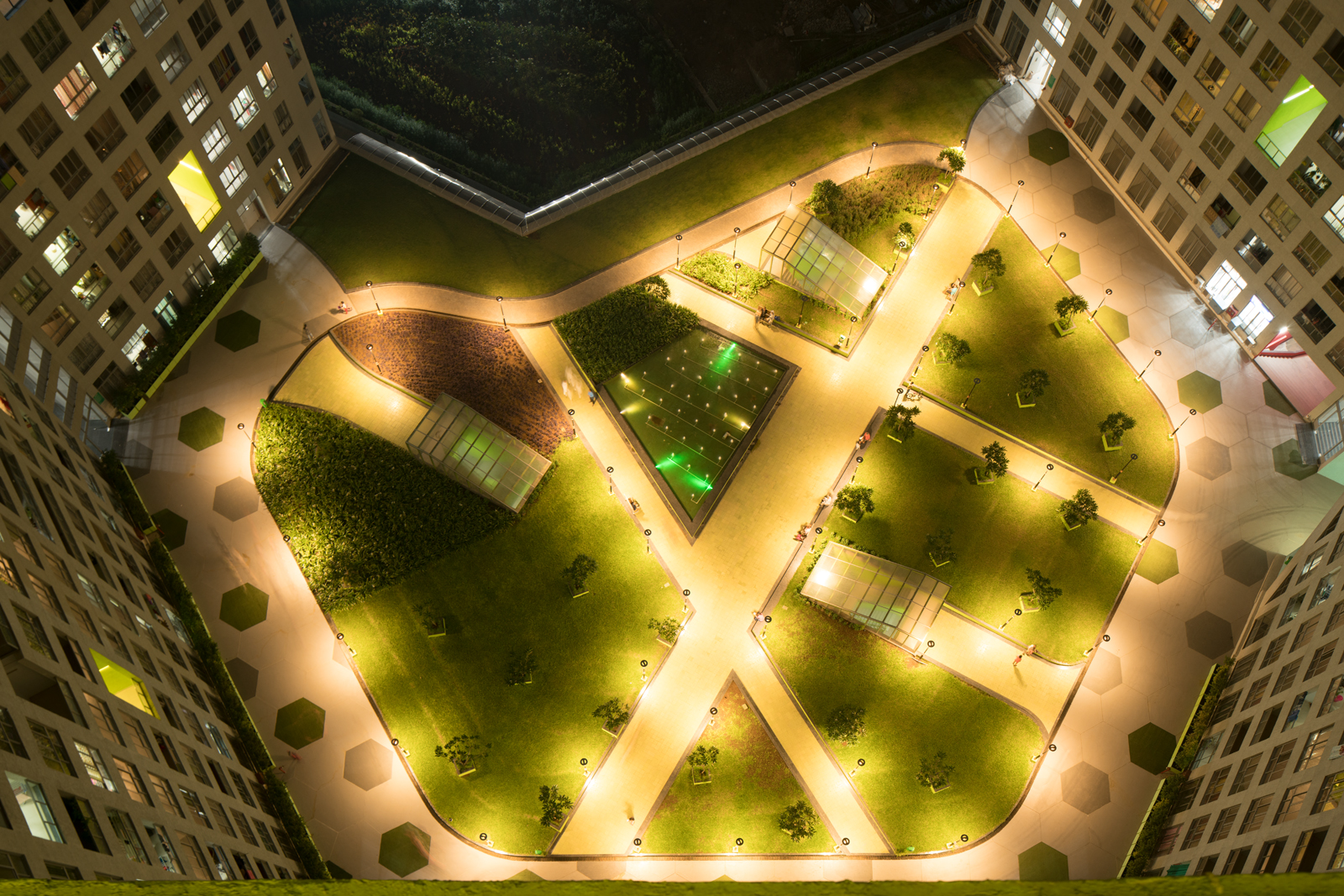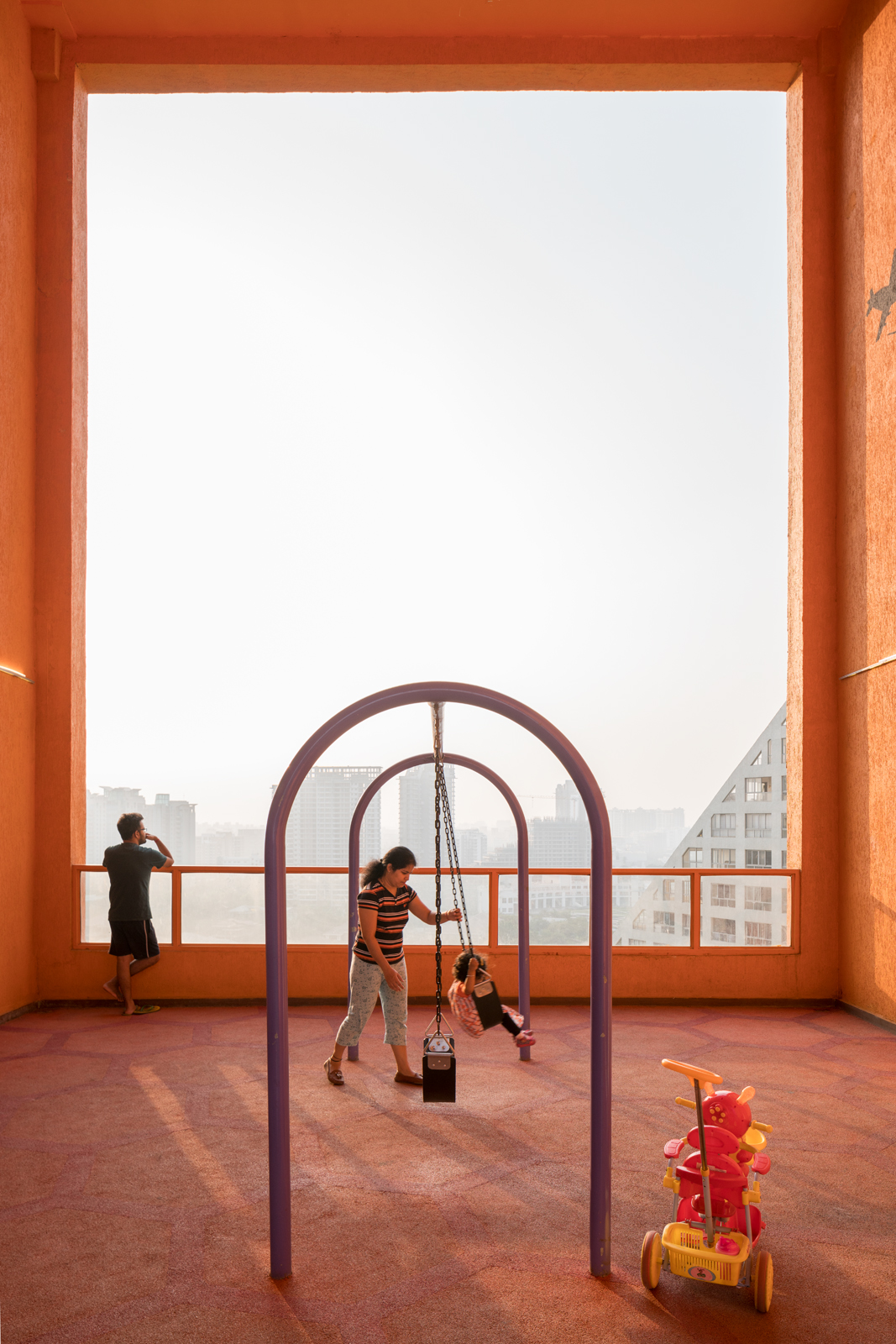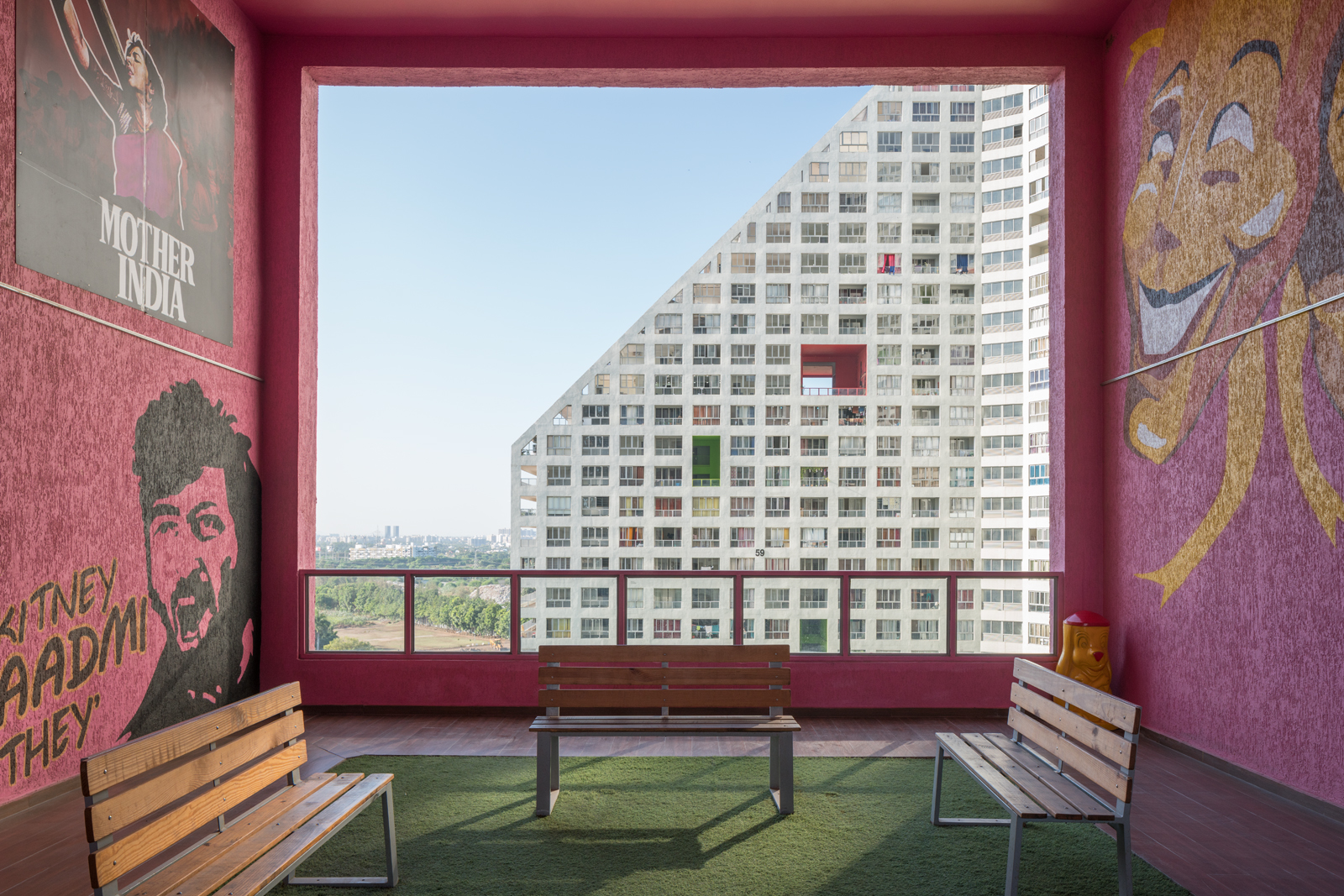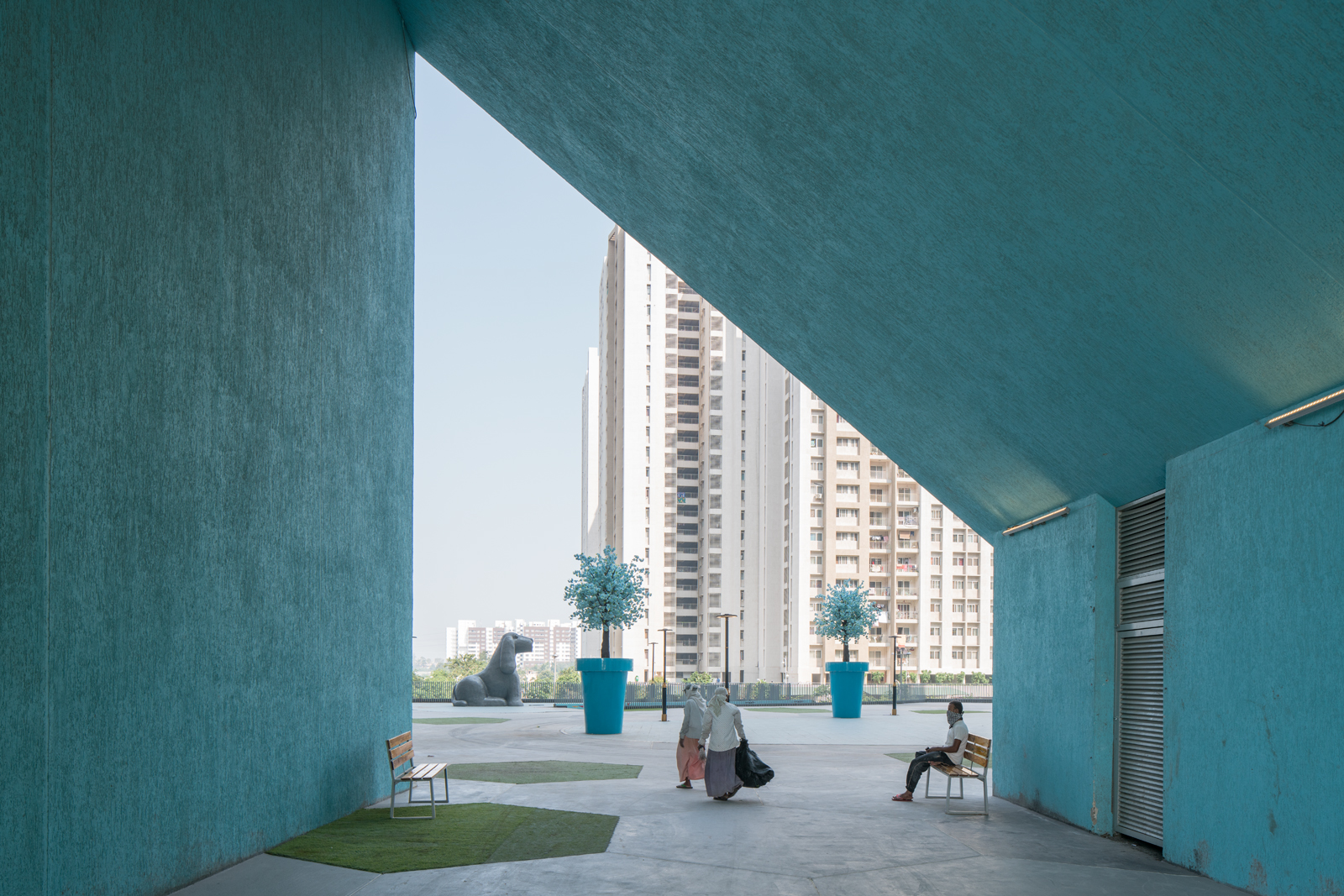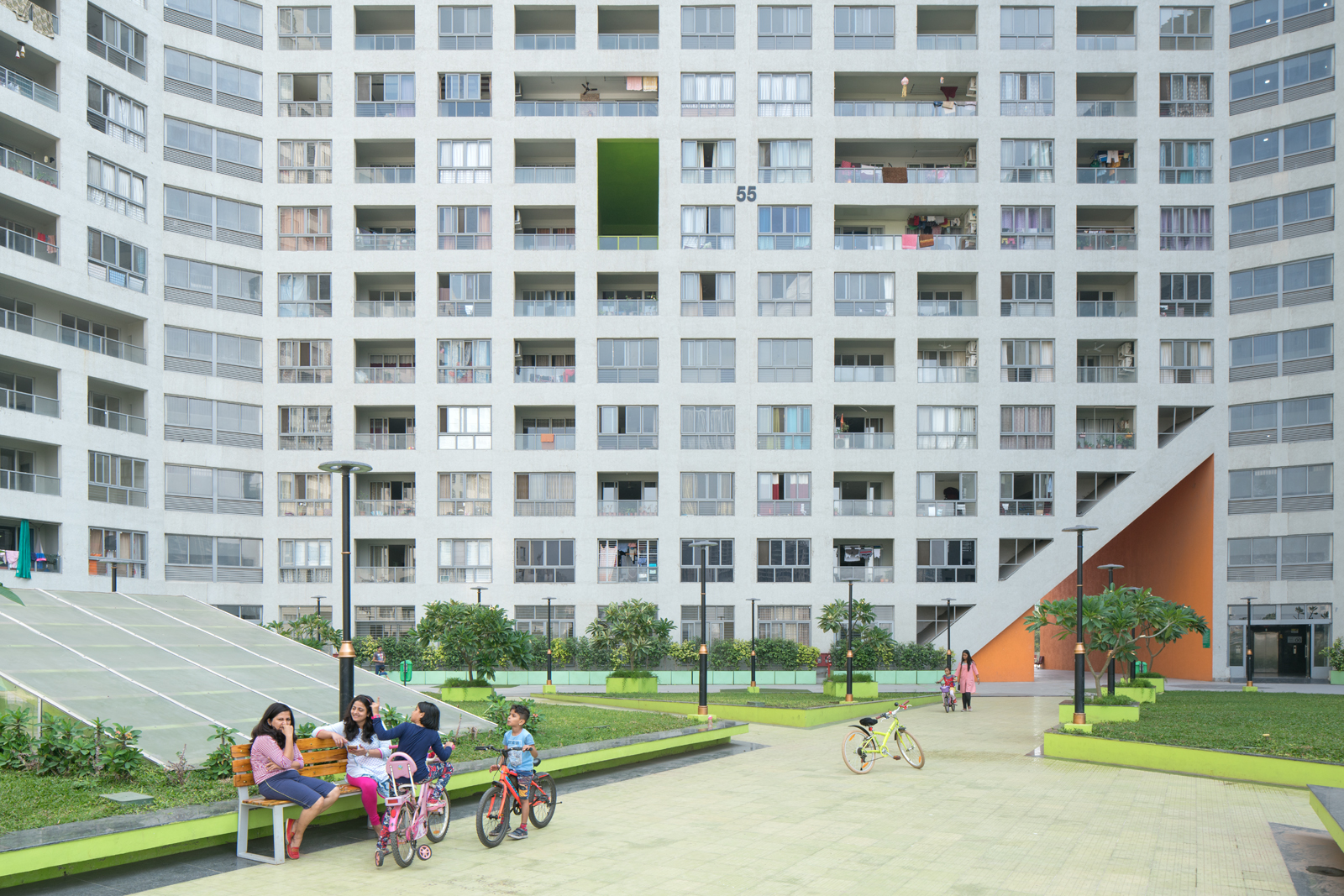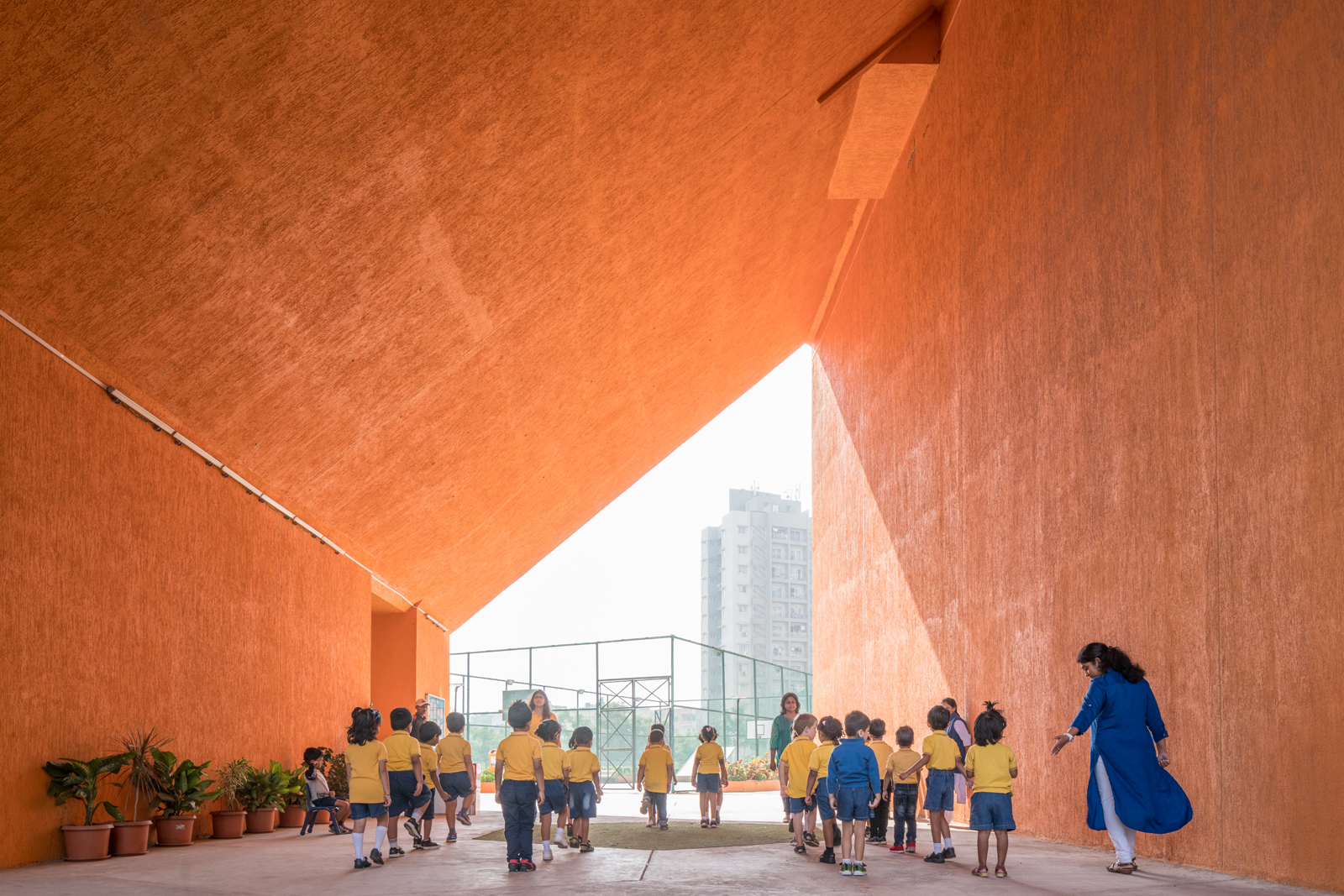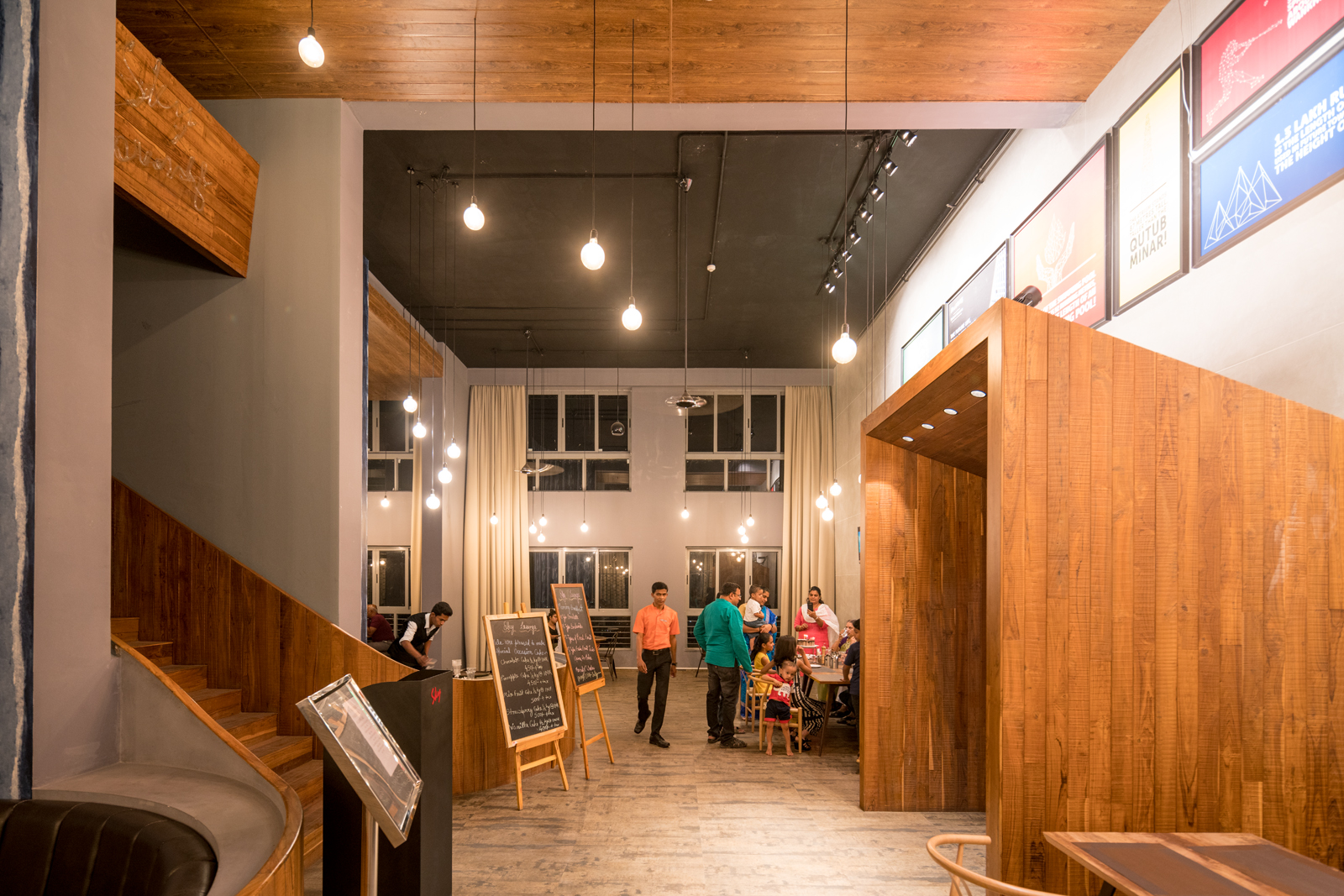AD
●● 멋진 세상 속 건축디자인_ 1,000개 유닛의 다이내믹한 수직 주거 마을, 인도 푸네 지구의 퓨처타워(Future Towers)… 산봉우리와 골짜기를 형상화한 경사형 매스와 절개한 입면을 통해 거주자의 다양한 라이프스타일을 담아내
현재 퓨처타워는 1단계가 마무리되었고, 2단계 계획과 더불어 향후 총 3단계에 걸쳐 3,500세대가 거주하는 주거시설로 개발되고 있다. 퓨처타워는 인도 주택에 대한 수요와 인도 문화에 대한 기대치를 효과적으로 반영함으로써 도시의 문맥을 고려하고 지역사회 거주자의 삶의 질을 높일 방안을 합리적으로 제시하고 있다.
MVRDV has completed its first project in India, Future Towers. Located in Pune, India’s 8th largest city and one of the fastest-growing cities in the country, Future Towers provides 1,068 apartments for a diverse section of the rapidly expanding population, a true vertical village that will house around 5,000 people in one building.
Future Towers is a part of Amanora Park Town, a community created in 2007 thanks to legislation passed in 2005 by the state of Maharashtra to encourage the development of residential “townships” near its cities. In Pune, these townships help to house the young professionals attracted to the city by its auto-manufacturing and technology sectors but, as with much of the rapid development all over India, many of the new buildings on Pune’s outskirts are generic, repetitive residential towers. In just 11 years, Amanora Park Town has grown to over 25,000 residents by focusing on a diverse, high-quality mixture of towers alongside low-density villas. But the pressure to expand faster with more high-density, low-individuality housing was ever-present.
MVRDV’s design for the Future Towers aimed to offer an alternative to this pattern, while still delivering apartments at the usual low price(since competition for new residents between different housing developments is fierce). Instead of a cluster of freestanding buildings, MVRDV’s response to the brief was a singular mountainous structure with peaks and valleys, under which 1,068 apartments are unified in one building. However, despite its expressive appearance, the design of Future Towers in fact stems from a series of methodical decisions based on MVRDV’s research into Indian housing.
A critical deviation from the norm was to convince the client that the entire development would be more vibrant with a mixture of different units. This way, the building would ensure that users from the full spectrum of India’s exploding middle class all mingle—including young, mobile professionals who are new to the city; older, established residents; and families both large and small, all at a range of income levels. Apartments ranging from 45 square meters to 450 square meters are mixed together, a diversity enabled by the building’s mountainous shape and the shifting floor plans that it
generates.
“In Asia cities are growing so fast, and uniform repetitive residential towers are the norm”, says Jacob van Rijs, principal and co-founder of MVRDV. “With our design, we are making an effort to offer more variety and bring people from more different backgrounds together. In the original master plan, 16 separate towers were planned, all of which would have more or less the same type of apartments. The MVRDV team thoroughly researched modern Indian housing and came up with a system to create a mix of different types of apartment inside one building. This project will attract residents with a variety of incomes, something that will benefit the diversity of Amanora Park Town. Thanks to the client’s willingness to try something new, the efficiency needed for mass housing has
been achieved without cutting back on residents’ comfort.” Because construction costs are low in India, and elevators comparatively expensive, the economics usually applied to residential design could be inverted; thus a reduced number of lift cores combined with corridors were in this case more economically desirable than having many towers, each with its own core and fewer corridors. As a result of this calculation, MVRDV’s design features 9 housing wings ranging from 17 to 30 storeys arranged around just 4 circulation cores.
The slabs form a hexagonal grid, which allows for wide views from the apartments and leaves large
open public courtyards at ground level. The ‘peaks’ allow for optimized daylight conditions and the resulting inclined roofs allow for a number of exterior terraces, both private and communal. Recessed balconies on the main facades of the residential slabs themselves hint at the diversity of the homes behind, with a mixture of normal size, double-height, double-width and even some L-shaped balconies. The strong graphical appearance created by the balconies is accentuated by large, brightly coloured openings known as “scoops” that puncture the building’s facade to connect with the central corridor, providing public meeting spaces and cross ventilation in all communal spaces in the process. These spaces—which originated in the need to provide refuge spaces to meet the fire code requirements for long corridors—help to give a sense of “neighbourhood identity” to different parts of the building, with each scoop designated for a different activity(such as yoga or mini golf) or for a different type of resident(such as teens or toddlers). The courtyards below are linked by four-storey-high triangular gates, creating a 500-metre-long walk, and also feature different uses, with some designated for play, and others for sport, garden spaces, and more. This impressive list of amenities was made possible by the scale of the development: With so many apartments in one project, luxury features such as a 50-metre lap pool only add a fraction to the overall cost. >>Architects_ MVRDV, Principal in charge_ Jacob van Rijs, 자료_ MVRDV, Photographs_ Ossip van Duivenbode, 기사 출처_ 에이앤뉴스 AN NEWS(ANN 뉴스센터) 제공
안정원(비비안안 Vivian AN) 에이앤뉴스 ANN 발행인 겸 대표이사, 한양대학교 실내건축디자인학과 겸임교수, 한양대학교 IAB자문교수
제공_ 에이앤뉴스그룹 ANN NEWS GROUP(에이앤뉴스_ 건축디자인 대표 신문사 ‧ 에이앤프레스_건설지, 건설엔지니어링북, 건설스토리북, 건설백서 전문출판사)
[저작권자(c) YTN 무단전재, 재배포 및 AI 데이터 활용 금지]
현재 퓨처타워는 1단계가 마무리되었고, 2단계 계획과 더불어 향후 총 3단계에 걸쳐 3,500세대가 거주하는 주거시설로 개발되고 있다. 퓨처타워는 인도 주택에 대한 수요와 인도 문화에 대한 기대치를 효과적으로 반영함으로써 도시의 문맥을 고려하고 지역사회 거주자의 삶의 질을 높일 방안을 합리적으로 제시하고 있다.
MVRDV has completed its first project in India, Future Towers. Located in Pune, India’s 8th largest city and one of the fastest-growing cities in the country, Future Towers provides 1,068 apartments for a diverse section of the rapidly expanding population, a true vertical village that will house around 5,000 people in one building.
Future Towers is a part of Amanora Park Town, a community created in 2007 thanks to legislation passed in 2005 by the state of Maharashtra to encourage the development of residential “townships” near its cities. In Pune, these townships help to house the young professionals attracted to the city by its auto-manufacturing and technology sectors but, as with much of the rapid development all over India, many of the new buildings on Pune’s outskirts are generic, repetitive residential towers. In just 11 years, Amanora Park Town has grown to over 25,000 residents by focusing on a diverse, high-quality mixture of towers alongside low-density villas. But the pressure to expand faster with more high-density, low-individuality housing was ever-present.
MVRDV’s design for the Future Towers aimed to offer an alternative to this pattern, while still delivering apartments at the usual low price(since competition for new residents between different housing developments is fierce). Instead of a cluster of freestanding buildings, MVRDV’s response to the brief was a singular mountainous structure with peaks and valleys, under which 1,068 apartments are unified in one building. However, despite its expressive appearance, the design of Future Towers in fact stems from a series of methodical decisions based on MVRDV’s research into Indian housing.
A critical deviation from the norm was to convince the client that the entire development would be more vibrant with a mixture of different units. This way, the building would ensure that users from the full spectrum of India’s exploding middle class all mingle—including young, mobile professionals who are new to the city; older, established residents; and families both large and small, all at a range of income levels. Apartments ranging from 45 square meters to 450 square meters are mixed together, a diversity enabled by the building’s mountainous shape and the shifting floor plans that it
generates.
“In Asia cities are growing so fast, and uniform repetitive residential towers are the norm”, says Jacob van Rijs, principal and co-founder of MVRDV. “With our design, we are making an effort to offer more variety and bring people from more different backgrounds together. In the original master plan, 16 separate towers were planned, all of which would have more or less the same type of apartments. The MVRDV team thoroughly researched modern Indian housing and came up with a system to create a mix of different types of apartment inside one building. This project will attract residents with a variety of incomes, something that will benefit the diversity of Amanora Park Town. Thanks to the client’s willingness to try something new, the efficiency needed for mass housing has
been achieved without cutting back on residents’ comfort.” Because construction costs are low in India, and elevators comparatively expensive, the economics usually applied to residential design could be inverted; thus a reduced number of lift cores combined with corridors were in this case more economically desirable than having many towers, each with its own core and fewer corridors. As a result of this calculation, MVRDV’s design features 9 housing wings ranging from 17 to 30 storeys arranged around just 4 circulation cores.
The slabs form a hexagonal grid, which allows for wide views from the apartments and leaves large
open public courtyards at ground level. The ‘peaks’ allow for optimized daylight conditions and the resulting inclined roofs allow for a number of exterior terraces, both private and communal. Recessed balconies on the main facades of the residential slabs themselves hint at the diversity of the homes behind, with a mixture of normal size, double-height, double-width and even some L-shaped balconies. The strong graphical appearance created by the balconies is accentuated by large, brightly coloured openings known as “scoops” that puncture the building’s facade to connect with the central corridor, providing public meeting spaces and cross ventilation in all communal spaces in the process. These spaces—which originated in the need to provide refuge spaces to meet the fire code requirements for long corridors—help to give a sense of “neighbourhood identity” to different parts of the building, with each scoop designated for a different activity(such as yoga or mini golf) or for a different type of resident(such as teens or toddlers). The courtyards below are linked by four-storey-high triangular gates, creating a 500-metre-long walk, and also feature different uses, with some designated for play, and others for sport, garden spaces, and more. This impressive list of amenities was made possible by the scale of the development: With so many apartments in one project, luxury features such as a 50-metre lap pool only add a fraction to the overall cost. >>Architects_ MVRDV, Principal in charge_ Jacob van Rijs, 자료_ MVRDV, Photographs_ Ossip van Duivenbode, 기사 출처_ 에이앤뉴스 AN NEWS(ANN 뉴스센터) 제공
안정원(비비안안 Vivian AN) 에이앤뉴스 ANN 발행인 겸 대표이사, 한양대학교 실내건축디자인학과 겸임교수, 한양대학교 IAB자문교수
제공_ 에이앤뉴스그룹 ANN NEWS GROUP(에이앤뉴스_ 건축디자인 대표 신문사 ‧ 에이앤프레스_건설지, 건설엔지니어링북, 건설스토리북, 건설백서 전문출판사)
[저작권자(c) YTN 무단전재, 재배포 및 AI 데이터 활용 금지]
